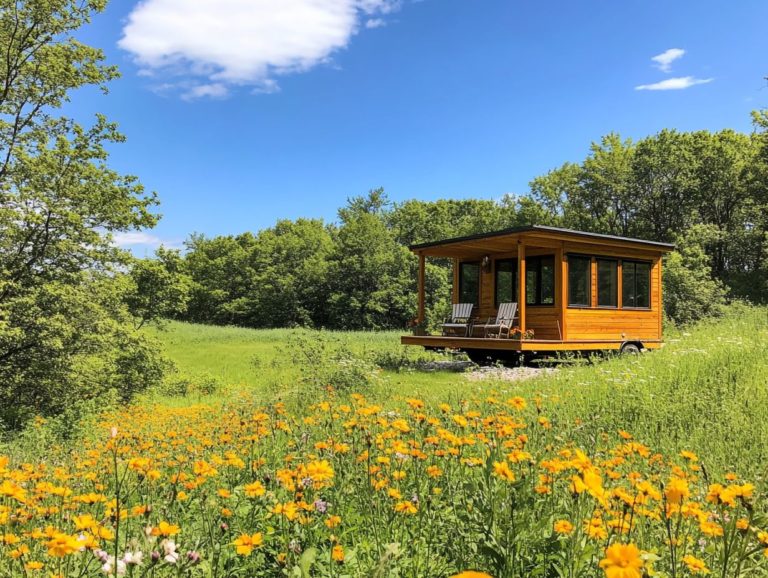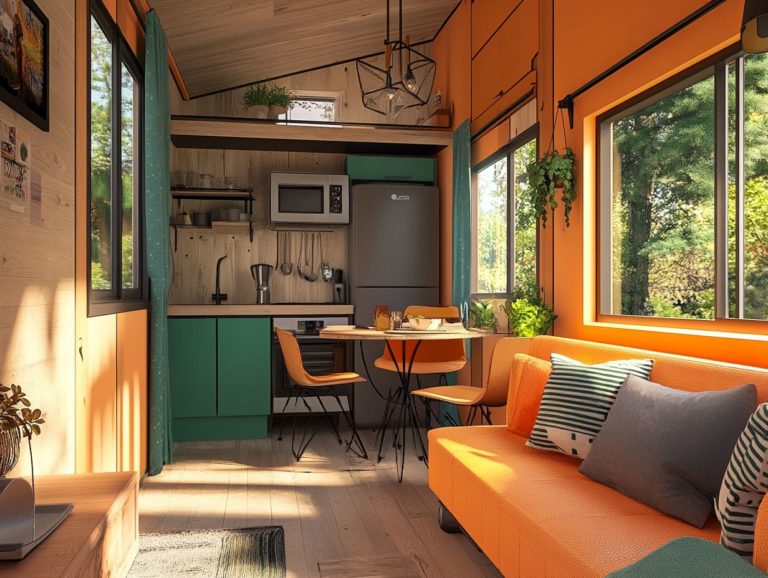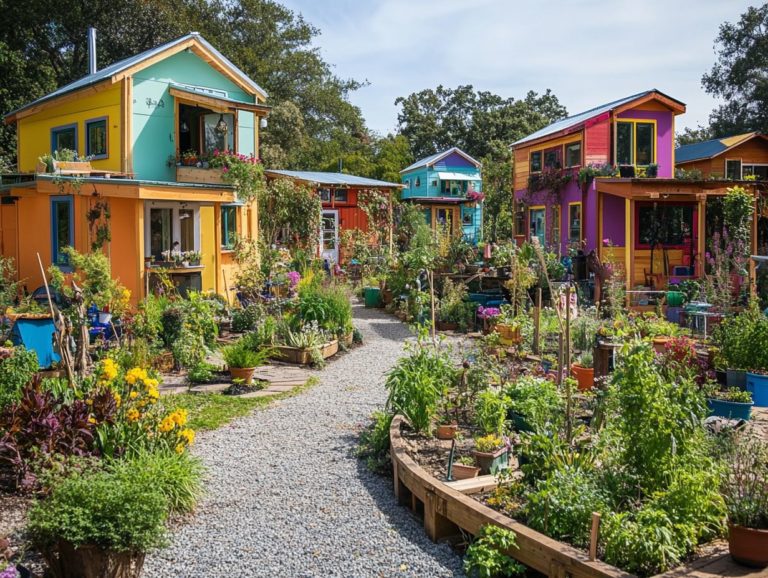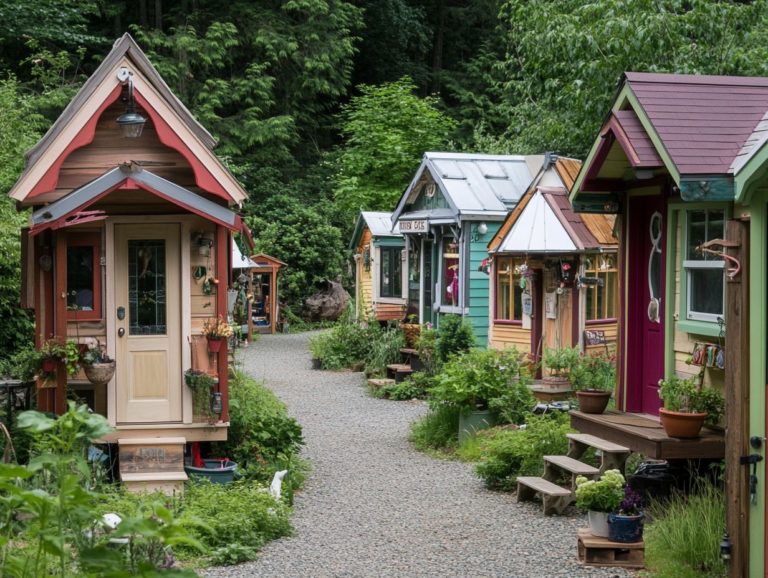Is it Possible to Downsize to a Tiny House?
The Tiny House Movement has undoubtedly captured your imagination, presenting a lifestyle that champions simplicity, sustainability, and financial freedom.
But what exactly defines a tiny house, and why are countless individuals opting to downsize?
This article delves into the numerous benefits ranging from environmental impacts to financial savings while also candidly addressing the challenges associated with living in a smaller space.
If you re contemplating this lifestyle shift, you ll find guidance on the essential steps, budgeting tips, and critical assessments to help you determine if a tiny house is indeed the right fit for you.
Contents [hide]
- Key Takeaways:
- The Tiny House Movement
- Reasons for Downsizing
- Challenges of Living in a Tiny House
- How to Downsize to a Tiny House
- Costs and Budgeting for a Tiny House
- Is Downsizing to a Tiny House Right for You?
- Frequently Asked Questions
- Is it Possible to Downsize to a Tiny House in America?
- What are the benefits of downsizing to a tiny house for environmental sustainability?
- Is it expensive to downsize to a tiny house when comparing it to traditional living in Denver or California?
- What are some challenges to downsizing to a tiny house due to homeowners challenges?
- Can I still have a comfortable living experience in a tiny house with children?
- Is it possible to downsize to a tiny house with a family, like those featured in Soles4Souls, a nonprofit organization dedicated to helping families?
Key Takeaways:
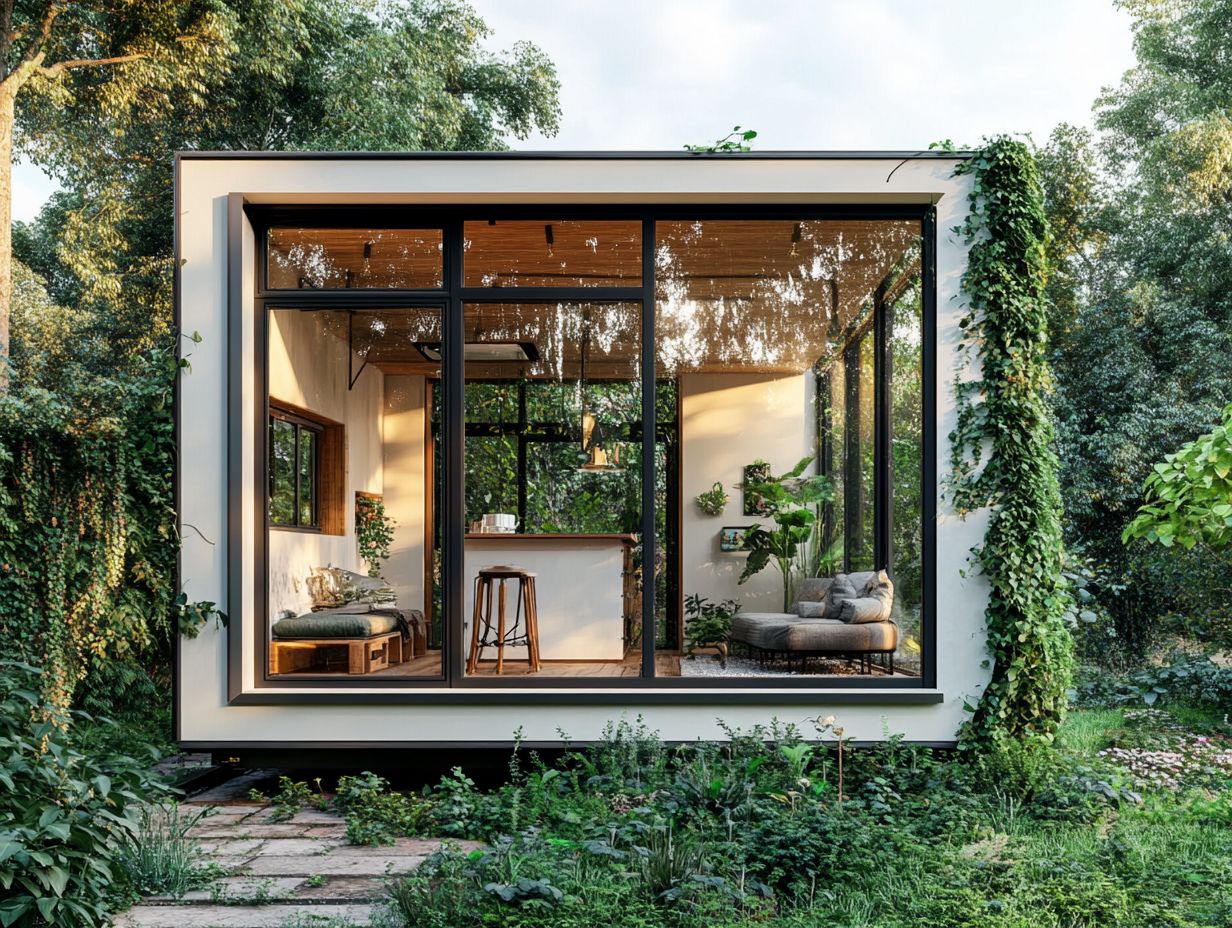
- Downsizing to a tiny house can have environmental and financial benefits.
- Living in a tiny house comes with its own set of challenges, such as adjusting to a smaller space and navigating legal and zoning considerations.
- Transitioning to a tiny house requires careful planning and budgeting, taking into account factors such as design, materials, and location.
The Tiny House Movement
The Tiny House Movement has gained remarkable momentum in America, especially in vibrant areas like Denver. Individuals and families are increasingly drawn to the allure of a simpler life through downsizing.
This movement champions the idea of living in small, efficient spaces often known as tiny homes. It encourages you to reconsider your financial landscape and emotional wellbeing.
Embracing this lifestyle not only fosters personal reflection but also nurtures community growth and sustainable living practices.
What is a Tiny House?
A tiny house is your chance to embrace a compact dwelling. Typically under 400 square feet, these homes are crafted to maximize space while minimizing environmental impact and championing a minimalist lifestyle.
These tiny homes often showcase innovative designs, featuring lofted sleeping areas, foldable furniture, and multifunctional spaces that adapt to your needs all while delivering comfort and style.
A defining aspect of this lifestyle is the clever use of space-saving furniture, giving you the power to maintain a functional living area without sacrificing the essentials.
Choosing tiny house living reflects not only a commitment to sustainability with reduced energy consumption and fewer resources for construction but it also aligns with the philosophy of minimalism. This philosophy encourages you to focus on experiences and what truly matters in life, rather than becoming bogged down by material possessions.
Reasons for Downsizing
The choice to downsize frequently arises from various motivations. You might aim to enhance your financial situation or reduce your impact on the environment.
Adopting a decluttered, minimalist lifestyle fosters tranquility and simplicity.
Environmental and Financial Benefits
Imagine the incredible benefits of downsizing to a tiny house! You ll enjoy lower energy bills and a smaller carbon footprint, making it an excellent choice for those who prioritize eco-conscious living.
This lifestyle shift not only cuts down on waste but also encourages a deeper appreciation for simplicity and intentional living.
By opting for a smaller space, you can save significantly on mortgage costs, allowing many to pay off their homes much faster.
With less square footage comes reduced maintenance expenses, freeing up both your time and money for pursuits that truly matter to you. These financial advantages often translate into increased savings, creating a more flexible lifestyle that aligns with your personal values.
Challenges of Living in a Tiny House
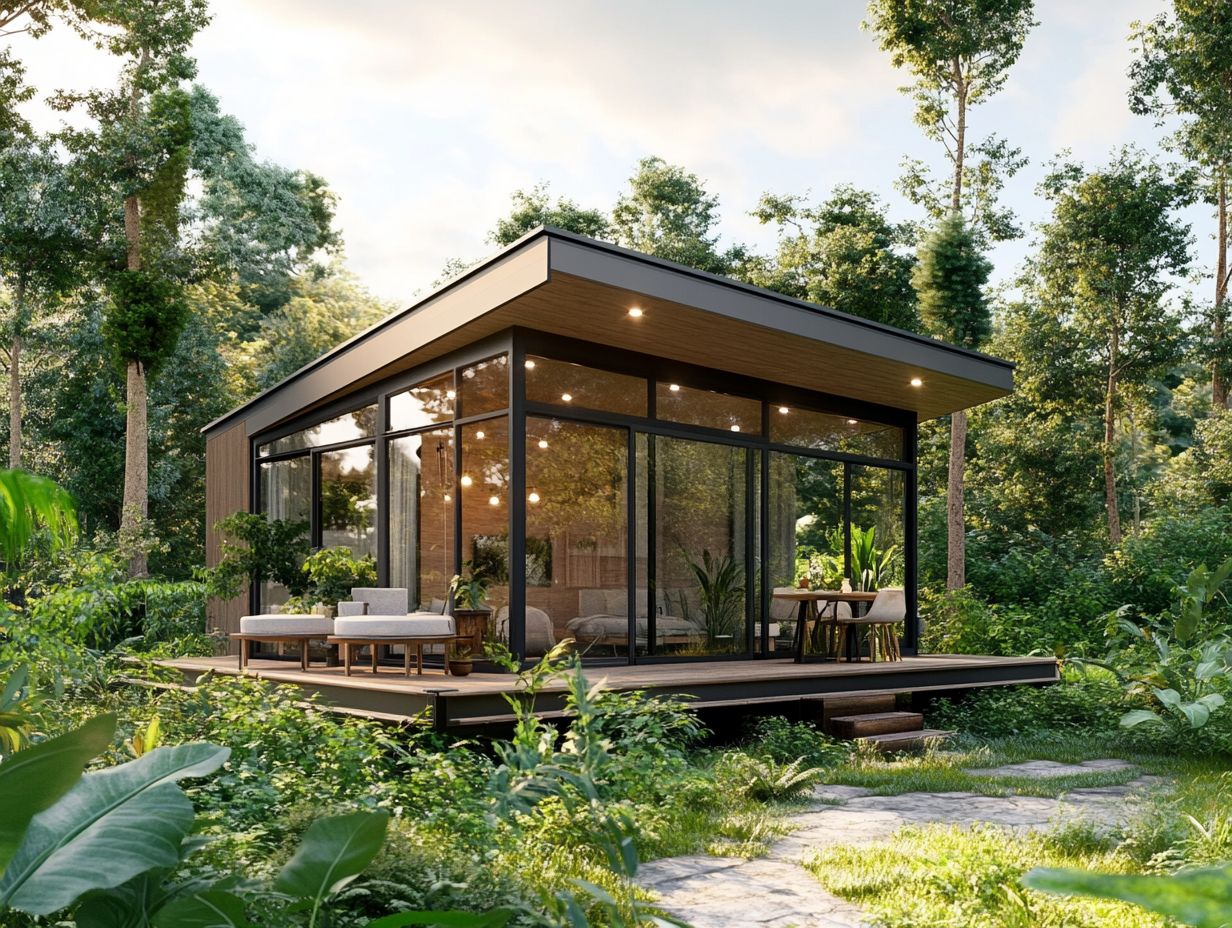
Living in a tiny house can be a rewarding experience, but it also comes with its own set of unique challenges.
You ll find yourself navigating the emotional journey of letting go of belongings while facing the practical realities of adjusting to a more compact living space.
Ready to simplify your life? Start exploring tiny house options today!
Adjusting to a Smaller Space
Adjusting to a smaller space in a tiny home demands innovative solutions. Consider space-saving furniture and strategic home organization to optimize functionality without sacrificing comfort.
Embracing a minimalist lifestyle can elevate your living experience. Explore furniture that serves multiple purposes. For example, a coffee table that also provides storage or a sofa bed that comfortably accommodates guests can make a remarkable difference.
Implementing vertical storage solutions, like wall-mounted shelves or hooks, keeps essential items organized and accessible. By adopting these strategies, you maximize your space and create a serene atmosphere despite the challenges of compact living.
Legal and Zoning Considerations
Navigating local laws and zoning rules is crucial for anyone contemplating a tiny house. These regulations can significantly influence where and how you can build or park your tiny home.
Understanding the intricacies of zoning laws is vital. These rules often dictate the minimum square footage for residential structures, which may not align with your tiny house vision. Obtaining necessary permits ensures your construction meets safety standards and adheres to local building codes.
Consider land use regulations, which can vary widely across regions, affecting where you can place your tiny home be it on private property or in designated parks.
Numerous online resources and local planning offices can assist you, offering insights on compliance and requirements. Staying informed smooths your journey into tiny living and helps protect the integrity of the growing tiny house movement.
How to Downsize to a Tiny House
Successfully downsizing to a tiny house requires a clear plan. You ll want to plan a packing party, conduct a thorough inventory check, and methodically declutter your possessions.
Every step matters! They ensure your new home feels both spacious and organized, making the transition smoother and more enjoyable.
Steps for Transitioning to a Tiny House
Transitioning to a tiny house involves key steps that shape your experience. Start by assessing your current living situation, organizing a packing party, and embracing the emotional journey of letting go of unnecessary items.
As you navigate this lifestyle change, evaluate both your physical possessions and your emotional attachments to them. Creating a detailed timeline will help establish a clear path for structured decluttering and organization.
Implementing coping strategies like journaling or seeking professional guidance can alleviate the stress often accompanying downsizing. Connecting with local tiny house communities provides invaluable support, resources, shared experiences, and practical tips.
Engaging with these networks fosters camaraderie, transforming your shift toward minimalism into a collective journey enriched by shared stories and collective wisdom.
Costs and Budgeting for a Tiny House
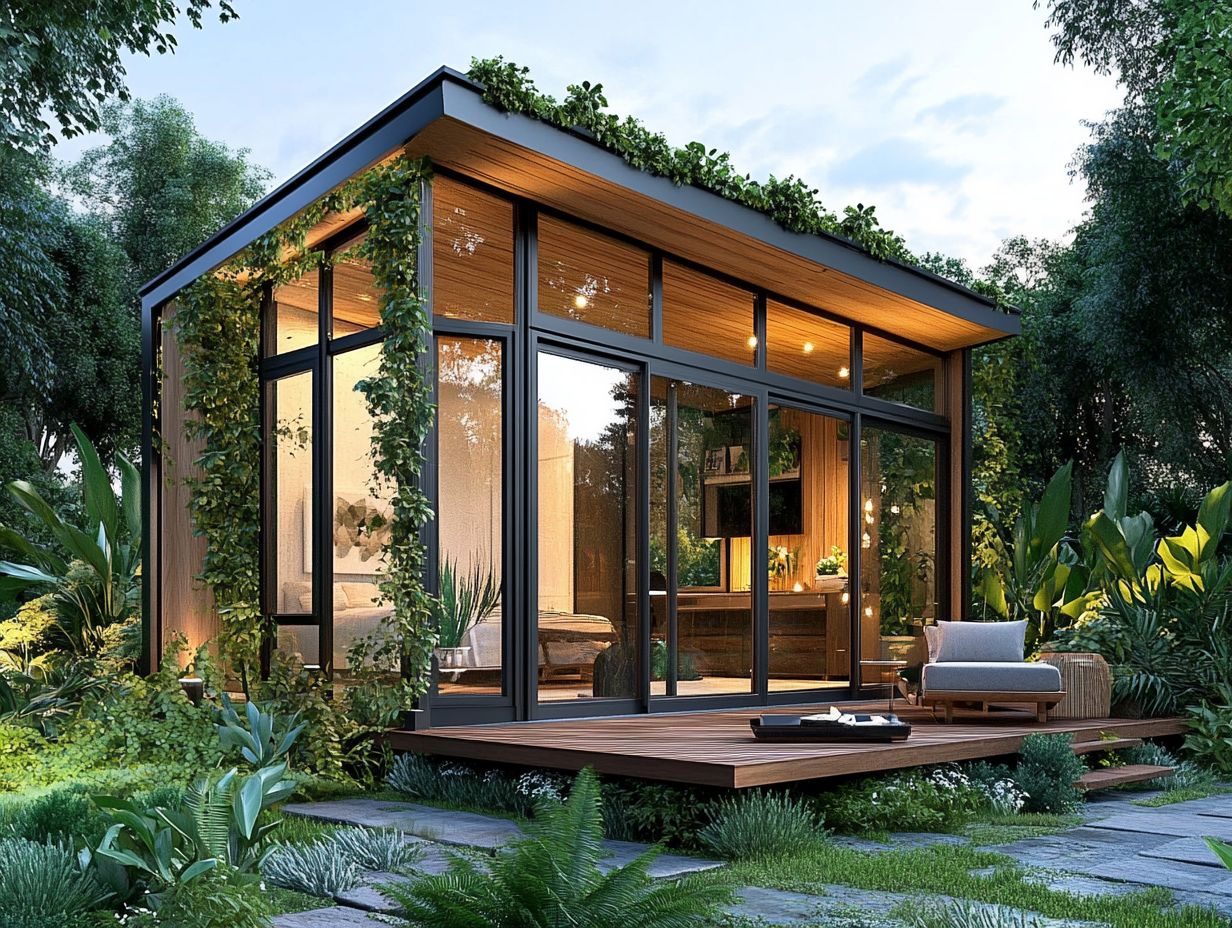
Grasping the costs and budgeting for a tiny house is essential for you as a prospective homeowner. Upfront expenses and ongoing maintenance can vary significantly based on your design choices and location.
Check local laws today to get started on your tiny living journey!
Factors to Consider and Tips for Saving
When budgeting for your tiny house, there are several crucial factors to consider, including location and design. Your available savings also play a significant role in determining the overall cost and financial viability of your tiny lifestyle.
Consider the costs of land, utilities, permits, and potential financing options. Many tiny house enthusiasts overlook these expenses, which can dramatically affect their overall budget. Understanding the benefits of going tiny can help in making informed decisions. Opting for the right location can help minimize costs. For example, some areas offer tax incentives or lower land prices that can be quite beneficial.
To maximize your savings, think about tackling DIY projects for your build. Ensure you thoroughly research material costs and energy-efficient appliances. It s also wise to keep an eye out for hidden expenses, such as maintenance and insurance fees, to avoid any unexpected financial strain.
With careful planning and foresight, moving into a tiny house can be a much smoother and more enjoyable experience.
Is Downsizing to a Tiny House Right for You?
Deciding whether to downsize to a tiny house requires thoughtful reflection on your lifestyle, personal values, and your willingness to navigate the emotional journey that comes with such a significant transition.
Assessing Your Lifestyle and Needs in the Context of Home Living
Assessing your lifestyle and needs is a crucial step in determining whether a tiny house aligns with your personal and financial goals, especially when facing the common challenges of homeownership.
Consider factors like your income stability, family size, and individual preferences. These elements significantly influence your evaluation. For example, a smaller family might find the transition to a tiny home more manageable, leading to reduced living expenses and simpler daily routines. To learn more about this lifestyle, you can explore the pros and cons of tiny house living. Using multi-use items that serve several purposes can further enhance the efficiency of space in micro living.
Taking a close look at your income can reveal whether downsizing is a financially wise decision, potentially unlocking opportunities for savings and investment. Your personal preferences, perhaps a yearning for minimalism or a deeper connection to nature, can serve as powerful motivators for this lifestyle change. To understand the benefits of tiny house living, explore philosophies like Project 333 or the KonMari Method to inspire your journey toward a simpler life.
Ultimately, weighing these factors can guide you to a decision that truly enhances your quality of life, as many have found through resources like Forbes and the experiences shared by figures like Andra Coberly and Rob Greenfield.
Frequently Asked Questions
Is it Possible to Downsize to a Tiny House in America?
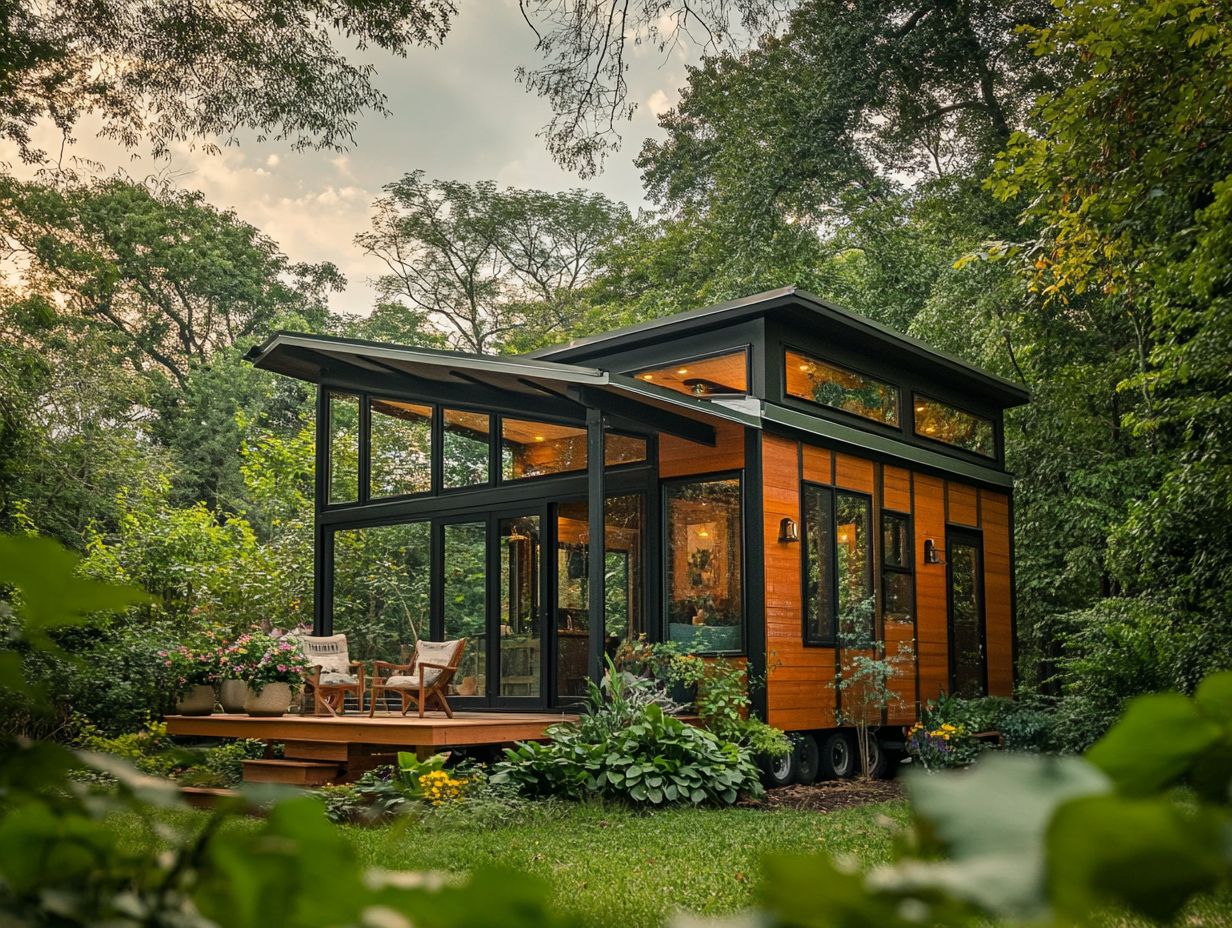
Yes, it is possible to downsize to a tiny house! Many people, including families and individuals influenced by The Minimalists, have successfully made the transition to living in a tiny house and are loving it.
What are the benefits of downsizing to a tiny house for environmental sustainability?
There are several benefits to downsizing to a tiny house, including lower expenses, a simpler and more sustainable lifestyle that aligns with environmental values, and the freedom to travel and explore more.
Is it expensive to downsize to a tiny house when comparing it to traditional living in Denver or California?
It can actually be quite cost-effective to downsize to a tiny house. The initial cost of purchasing or building a tiny house may be higher, but the ongoing expenses for utilities, maintenance, and taxes are significantly lower, especially compared to living in larger homes in cities like Denver or California.
What are some challenges to downsizing to a tiny house due to homeowners challenges?
One challenge may be adjusting to a smaller living space and getting rid of unnecessary belongings, which can be an emotional process. It can also be challenging to find a suitable location for your tiny house, as zoning and building codes may restrict where you can park or build it.
Ready to embrace a simpler life? Start your tiny house journey now!
Can I still have a comfortable living experience in a tiny house with children?
Yes, you can! Living in a tiny house does take some adjustments. However, many find the benefits and freedom well worth it. With clever design and organizing skills, you can create a comfortable and functional living space something many families have achieved with creativity and resourcefulness.
Is it possible to downsize to a tiny house with a family, like those featured in Soles4Souls, a nonprofit organization dedicated to helping families?
Absolutely! Downsizing to a tiny house with your family is not just possible; it can be an exciting adventure! It may require more planning and creativity, especially regarding space and storage solutions. Many families have successfully transitioned to tiny homes, inspired by the journeys of Tammy Strobel and Andrew Odom. They now enjoy the fulfilling lifestyle that tiny living offers.

